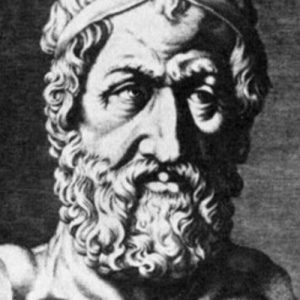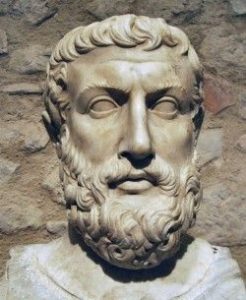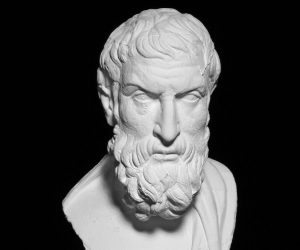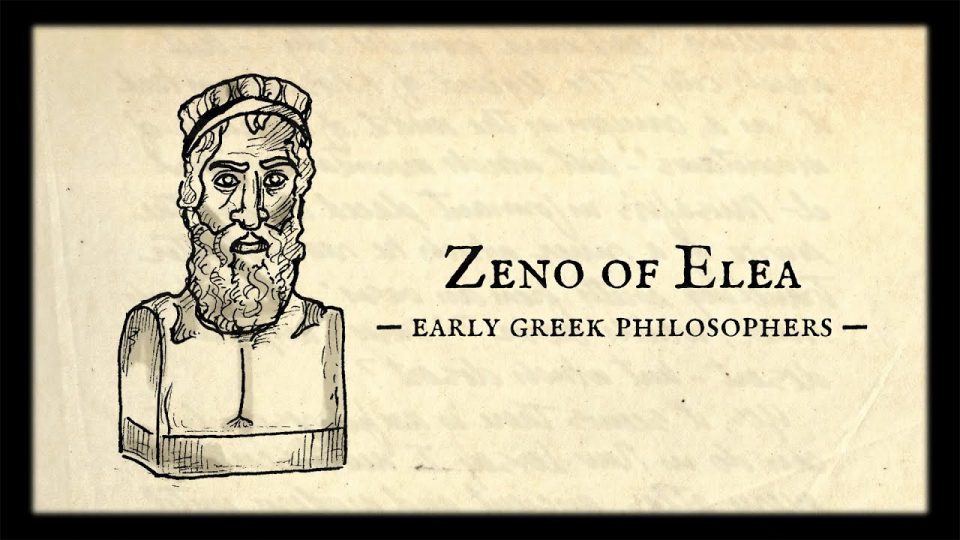Zeno of Elea was an ancient Greek philosopher who was the founder of the Eleatic school of philosophy. He was well-known during his time for his paradoxes and thought experiments. He is considered to be one of the founders of Stoicism. Similar to Parmenides and Heraclitus, he was also classified as a cosmologist and a proto-psychologist. He has also been described as a polymath, although there is only one brief reference in his writing that concerns geometry.
According to the other members of the Eleatic School, he never wrote any philosophical treatises, though Aristotle mentions a work On Nature by Zeno of Elea. He has held that all is one, being alone, infinite, immovable, and indivisible. Many arguments are bearing his name are probably spurious, among them being the paradoxes of motion.

He argued against the belief that motion is illusory based on his paradoxes. He did this to counter-arguments against the view of Parmenides that change is nothing but an illusion. This paradox Zeno states that motion is an illusion as, no matter how fast a person may move, they can never reach a point. It is similar to the omniscient observer problem in quantum mechanics, which assumes that one can never know where one particle is from another particle’s perspective.
Zeno of Ele acreated many paradoxes, some of which were inspired by the teachings of Parmenides. In the following three examples, Zeno proposed absurdities using reductio ad absurdum, which Socrates introduced.
-
Achilles and the Tortoise
In a race, the quickest runner can never overtake the slowest since the pursuer must first reach the point whence the pursued started so that the slower must always hold the lead.
This is the paradox of Achilles and the Tortoise. It goes like this:
Achilles is in a race with the tortoise. We all know that the tortoise is slow and Achilles is fast. The tortoise was given a head start of 200 meters. After that, they were to run at a pace of constant speed. Achilles was the fastest runner in the world, while the tortoise was just an ordinary tortoise. The race started, and Achilles walked fast towards where the tortoise had started from.
But when you slow things down and look closely, completely different laws of nature will be revealed. At the same time, the tortoise advances 20 meters when it takes Achilles to run a single meter. It soon becomes clear that this race can have no winner. Indeed, while Achilles needs some time to reach this new point on the track, the tortoise has moved a little bit further, and so on endlessly. Therefore, one can conclude that there really is no such thing as motion.

In simple terms, Zeno of Elea Zeno of Elea
Suppose that you wanted to ride your bike to work or school, then you would need to reach the halfway point of your trip. However, before you can get that halfway point, you have to travel half that distance… then half of that again! This means that you have at least four different ‘halfways’ in your way. The same applies when moving from the mountain base camp up to the summit of Everest. Again, look at the problem from a mathematical point of view. In this case, you must get halfway to A before you can get to A. But, before you get there, you have to get halfway towards it again. And so on and on.

This paradox states that movement is impossible, as both the end goal and successive steps can be split into infinite segments. There is no first step that one can take on the way to one’s goal; therefore, one can never reach the goal. Similarly, it is argued that every first step may be divided in half (likewise to the first case), meaning there will never be a starting point for movement. Therefore, the total distance to run is infinite, which Zeno of Elea argued to be impossible; therefore, motion is impossible.
-
The Arrow Paradox
If everything, when it occupies an equal space, is at rest, and if that which is in locomotion is always occupying such a space at any moment, the flying arrow is therefore motionless. -Aristotle Physics (VI:9, 239b5)
The Arrow Paradox says that for the motion to occur, an object must change its position. If you want to get from point A to point B, you must switch the space you occupy at any given time. Zeno of Elea takes an arrow in flight as an example of this paradox. An object moving only occupies one position at any given moment. The arrow paradox states that, in theory, all particles move in loops in space-time, but since time consists of many instants, the arrow paradox states that every particle moves in a straight line (in each moment).
If you observe an arrow at any instant of time, then the arrow is both at rest and in motion. The arrow paradox is a centuries-old riddle that seems to contradict intuition. It states if the arrow is flying, it cannot move to where it is not at the same time. Thus, if you want to get from A to B, you imply that you are moving from A to not-B or B to not-A. Hence the paradox.
Final Thoughts
The paradoxes of Zeno of Elea are inextricably linked. They are not contradictory but rather equivalent ways of looking at the same situation from different viewpoints. If you are constantly analyzing the same problem, in the same way, you will never see it as anything else but a purely instrumental perspective. You will be perpetually optimizing for the situation at hand rather than exploring alternatives or evaluating alternative courses of action.
